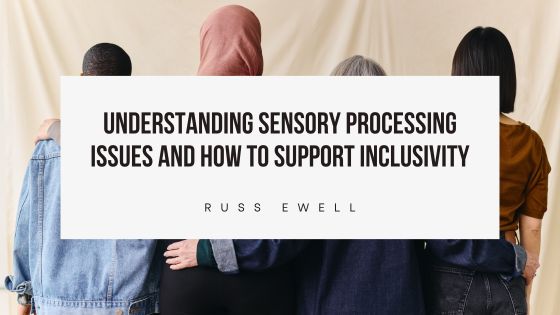Sensory processing issues affect how the brain interprets and responds to sensory stimuli from the environment. For individuals with sensory processing challenges, everyday experiences such as sights, sounds, smells, and textures can be overwhelming, confusing, or even distressing. Understanding these issues is crucial for fostering inclusivity, particularly in educational settings, workplaces, and social environments. By creating supportive spaces, we can help individuals with sensory processing issues navigate the world more comfortably and confidently.
What Are Sensory Processing Issues?
Sensory processing refers to how the nervous system receives messages from the senses and turns them into appropriate motor and behavioral responses. Sensory processing issues occur when the brain has difficulty filtering, organizing, and interpreting these sensory signals. This can lead to either hypersensitivity (over-responsiveness) or hyposensitivity (under-responsiveness) to sensory stimuli.
For example, a child with hypersensitivity to sound may find the hum of fluorescent lights or the chatter in a classroom unbearable, while another with hyposensitivity might seek out loud noises or rough textures to feel more grounded. These challenges can impact daily functioning, learning, social interactions, and overall well-being.
Common Sensory Processing Challenges
- Tactile Sensitivity: Individuals may be overly sensitive to touch, finding certain fabrics, tags, or even light touches uncomfortable or painful. Alternatively, they may not register touch as easily and may seek out deep pressure or rough textures to feel regulated.
- Auditory Sensitivity: Some people may be easily overwhelmed by sounds that others barely notice, such as background noise, alarms, or crowded environments. Conversely, those with auditory hyposensitivity might not respond to sounds that typically demand attention.
- Visual Sensitivity: Bright lights, fast-moving objects, or busy environments can be overstimulating for individuals with visual sensitivity. They may prefer dim lighting or need sunglasses indoors.
- Vestibular and Proprioceptive Issues: The vestibular system helps with balance and spatial orientation, while the proprioceptive system relates to body awareness. Sensory processing issues in these areas can lead to difficulties with coordination, balance, or a constant need for movement.
Supporting Inclusivity for Individuals with Sensory Processing Issues
Inclusivity means creating environments where everyone feels welcome and supported, regardless of their sensory needs. Here are some strategies to support individuals with sensory processing challenges:
- Create Sensory-Friendly Spaces: Designate quiet areas where individuals can retreat if they feel overwhelmed. These spaces should have minimal sensory input—dim lighting, soft textures, and noise-canceling options can make a significant difference.
- Offer Flexible Seating and Movement Options: Allow individuals to choose seating that meets their sensory needs, such as bean bags, rocking chairs, or standing desks. Incorporating movement breaks or providing fidget tools can also help regulate sensory input.
- Use Visual Supports: Visual schedules, clear signage, and picture cues can help those with sensory processing issues understand and predict what will happen next, reducing anxiety and making environments more navigable.
- Be Mindful of Sensory Triggers: Educators, employers, and caregivers should be aware of common sensory triggers and make accommodations where possible. This might include reducing background noise, adjusting lighting, or offering alternatives to uncomfortable clothing.
- Encourage Open Communication: Create an environment where individuals feel comfortable expressing their sensory needs. Encourage them to communicate what helps or hinders their ability to engage fully in activities.
- Promote Sensory Awareness in the Community: Educating peers, colleagues, and the broader community about sensory processing issues fosters empathy and understanding. Awareness campaigns, workshops, and training sessions can help demystify these challenges and promote inclusivity.
Conclusion
Understanding sensory processing issues is a critical step toward fostering inclusivity in various settings. By creating environments that accommodate diverse sensory needs, we can ensure that everyone has the opportunity to participate fully and comfortably in all aspects of life. Inclusivity is not just about physical accessibility; it’s about recognizing and respecting the unique sensory experiences of every individual, making the world a more welcoming place for all.

